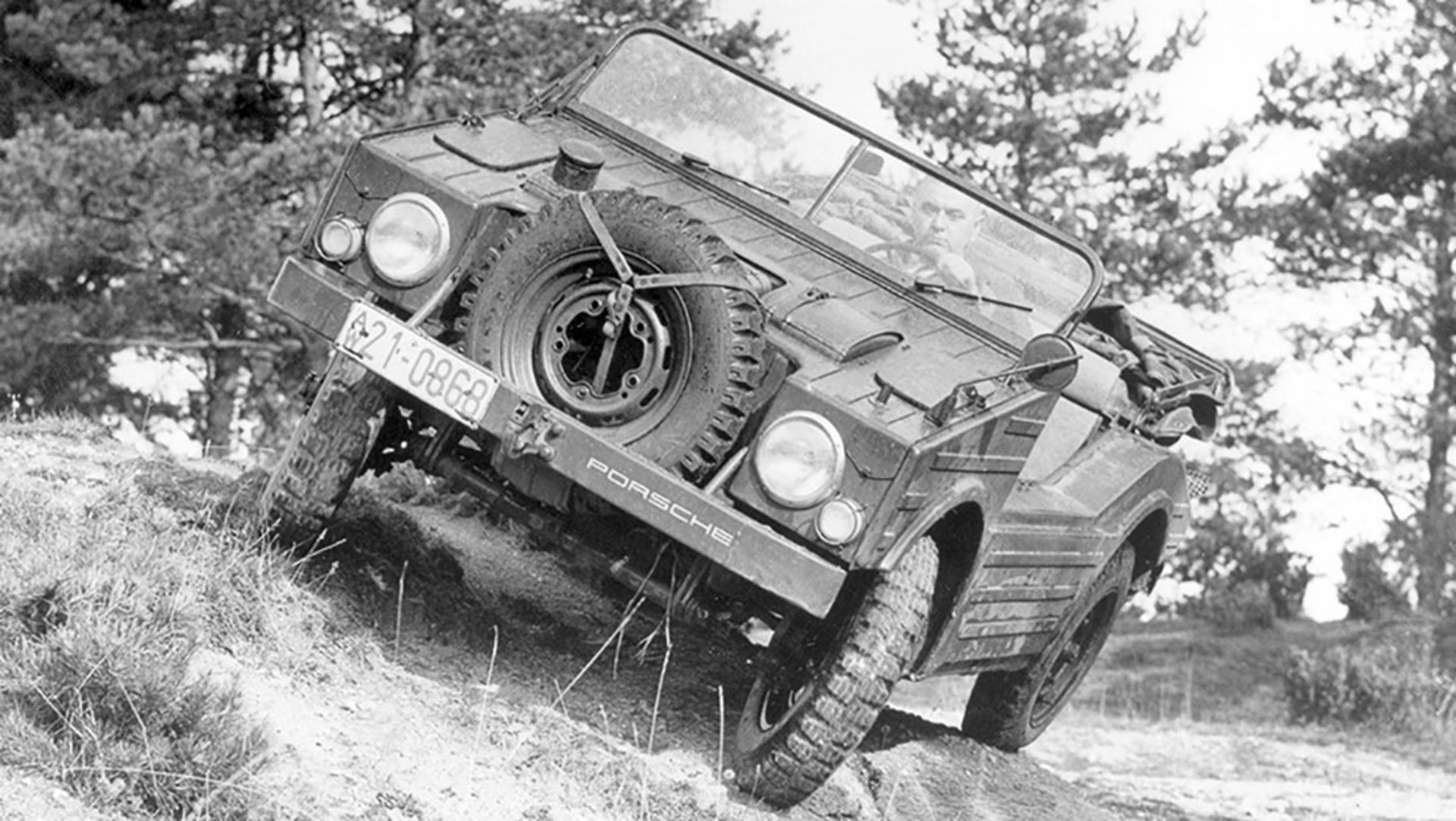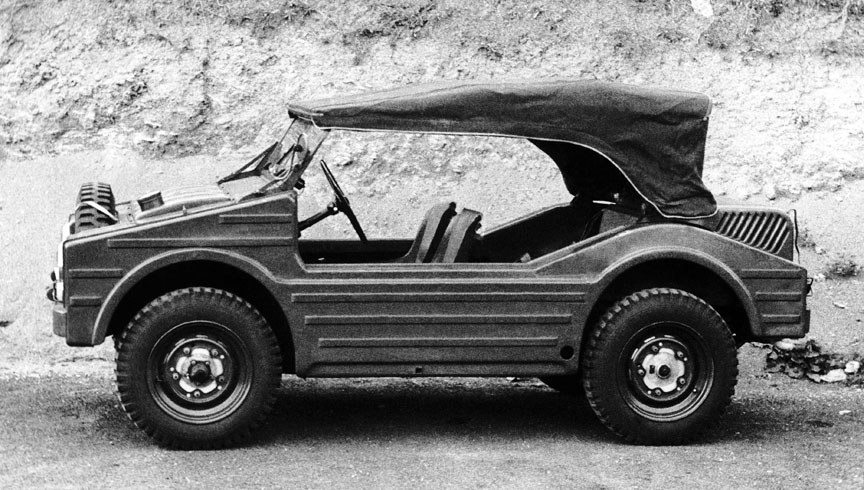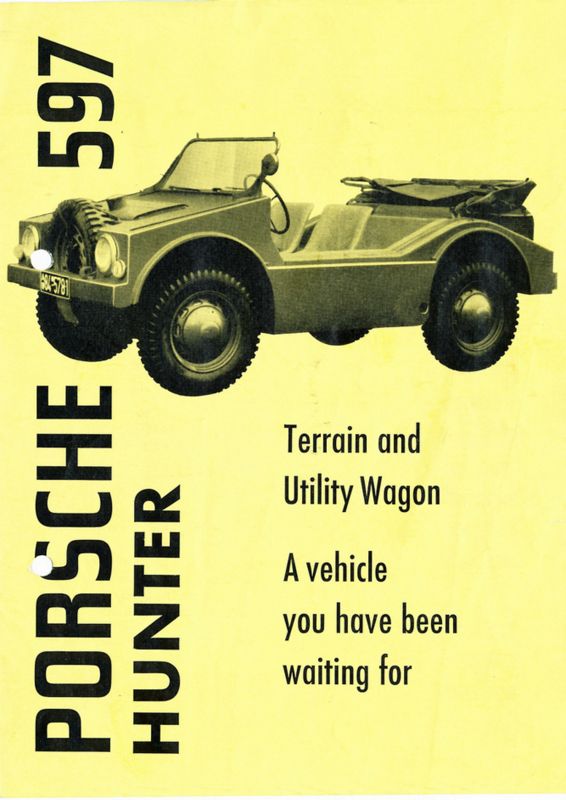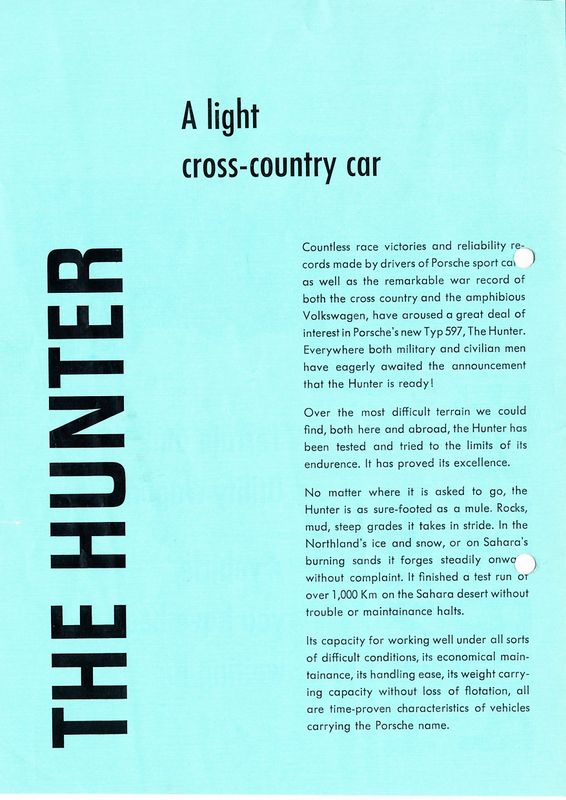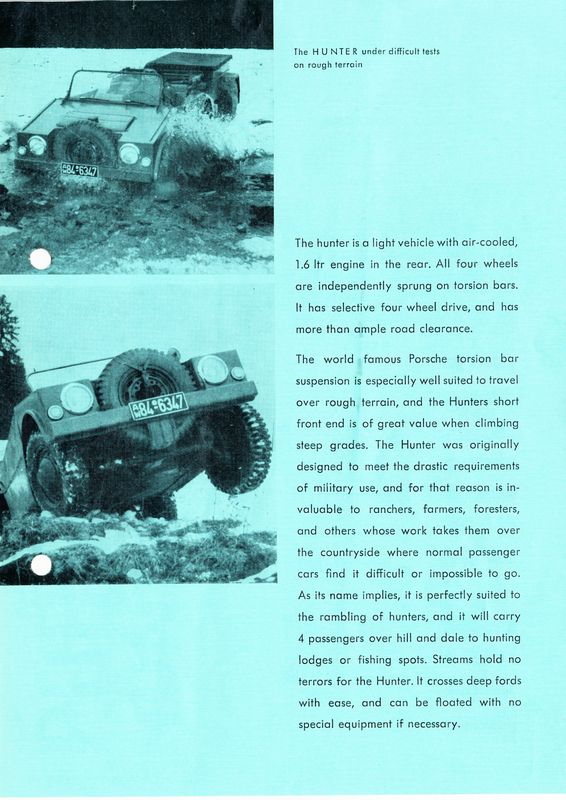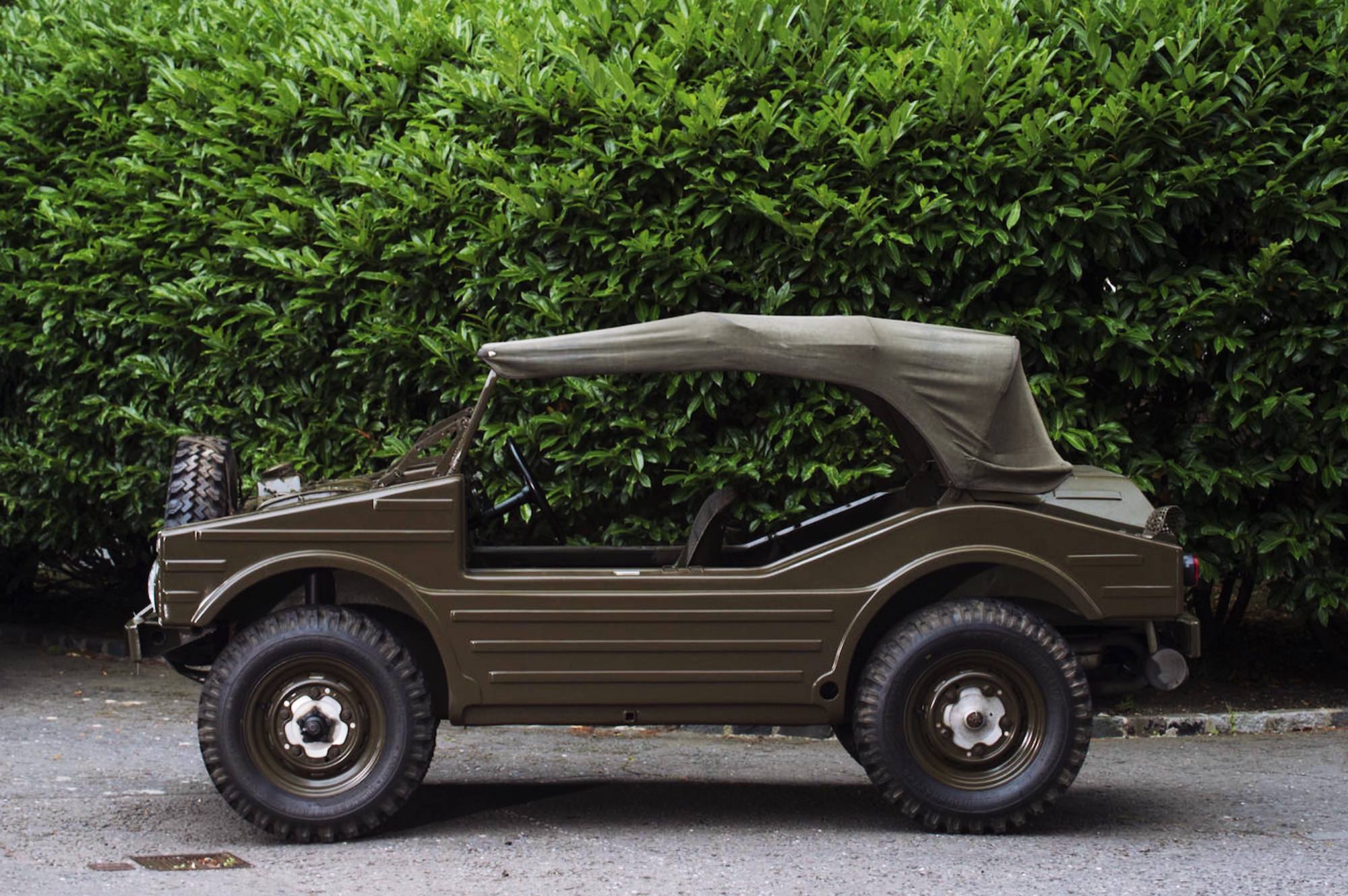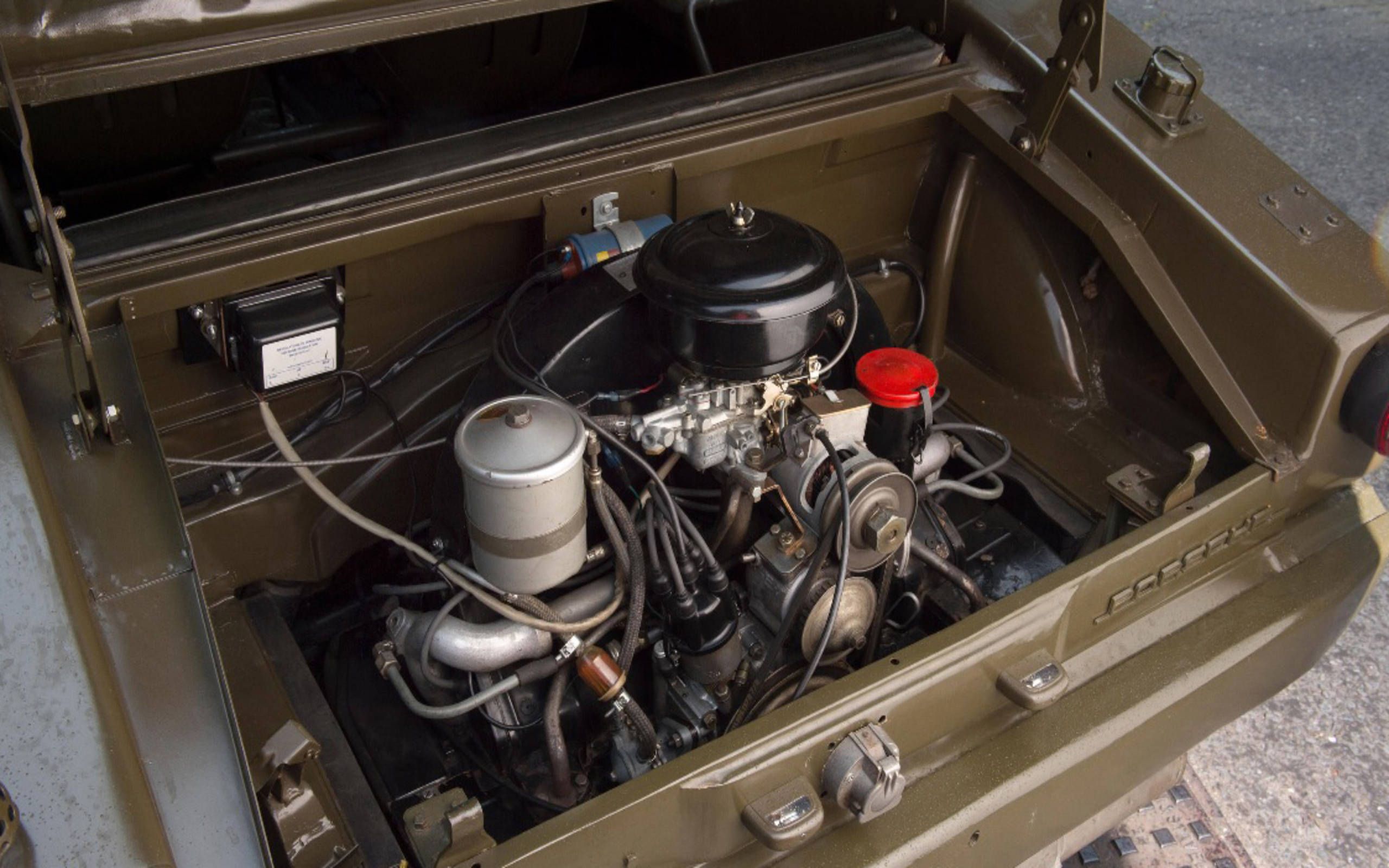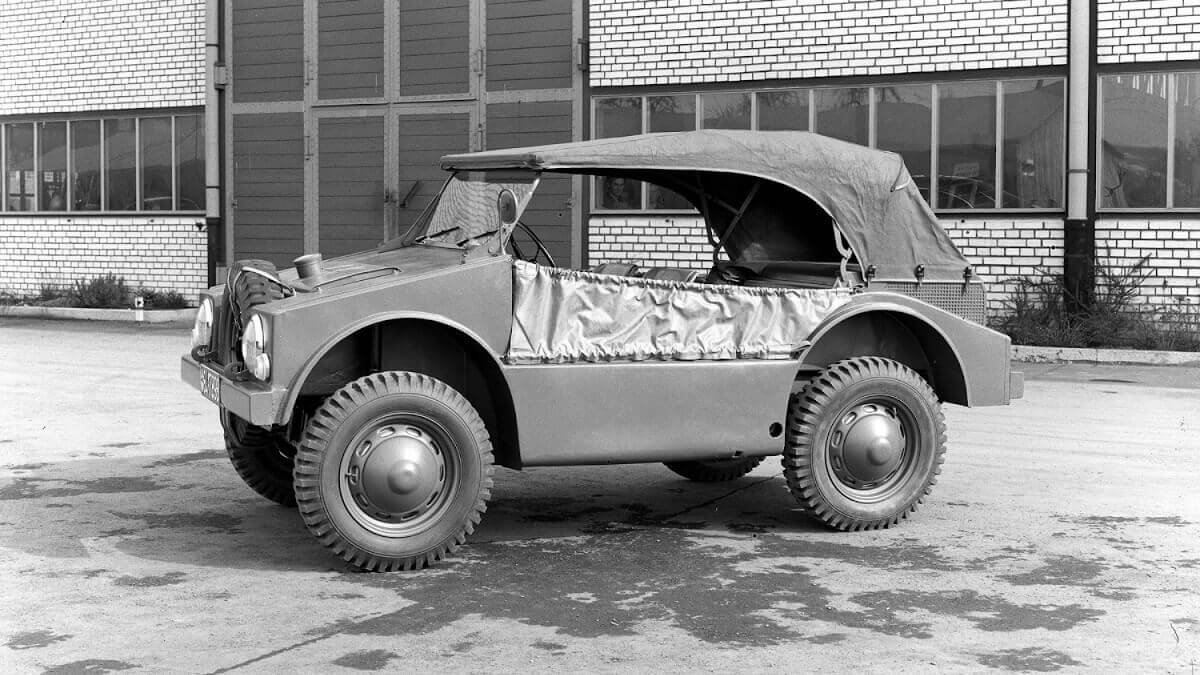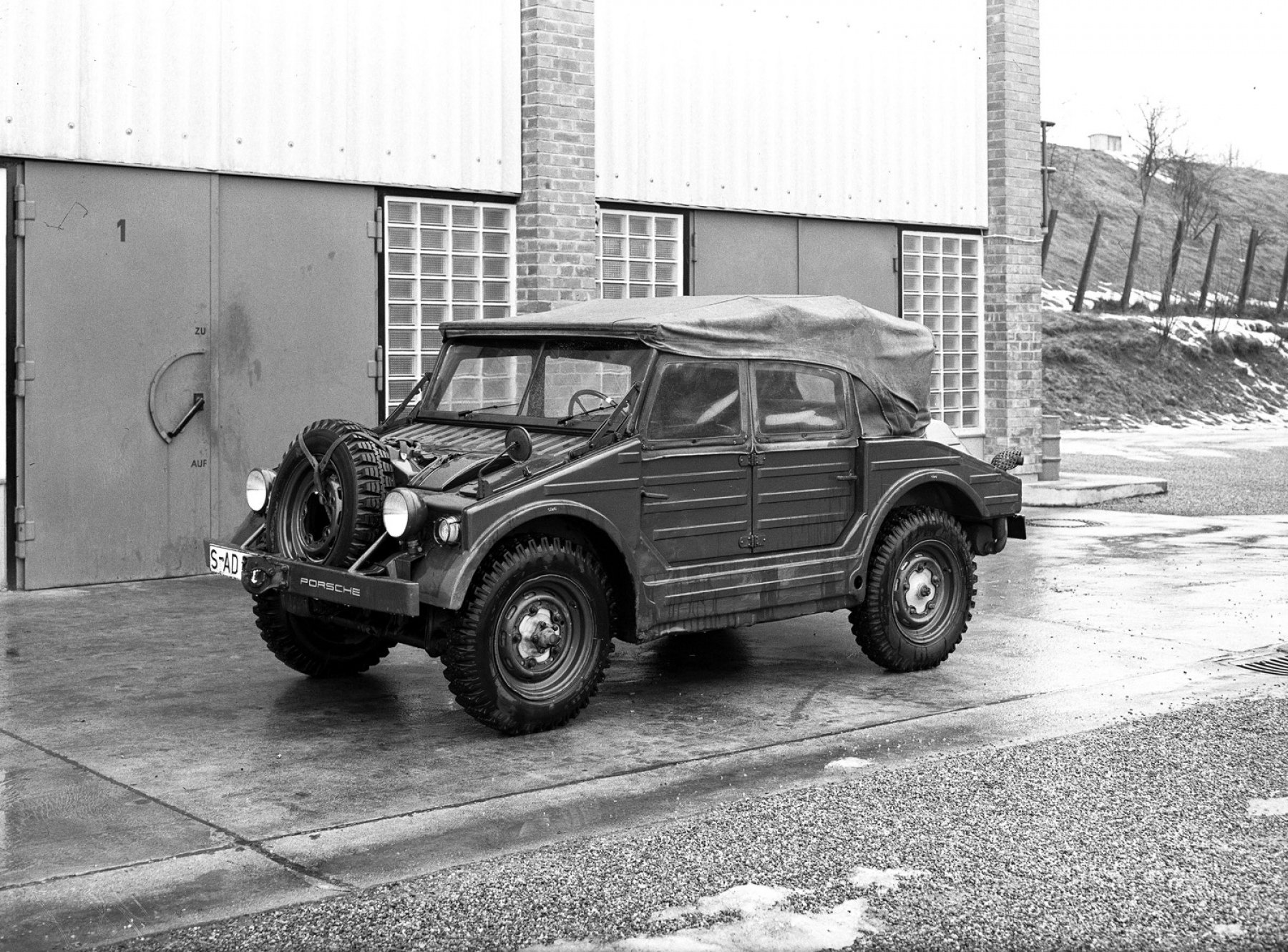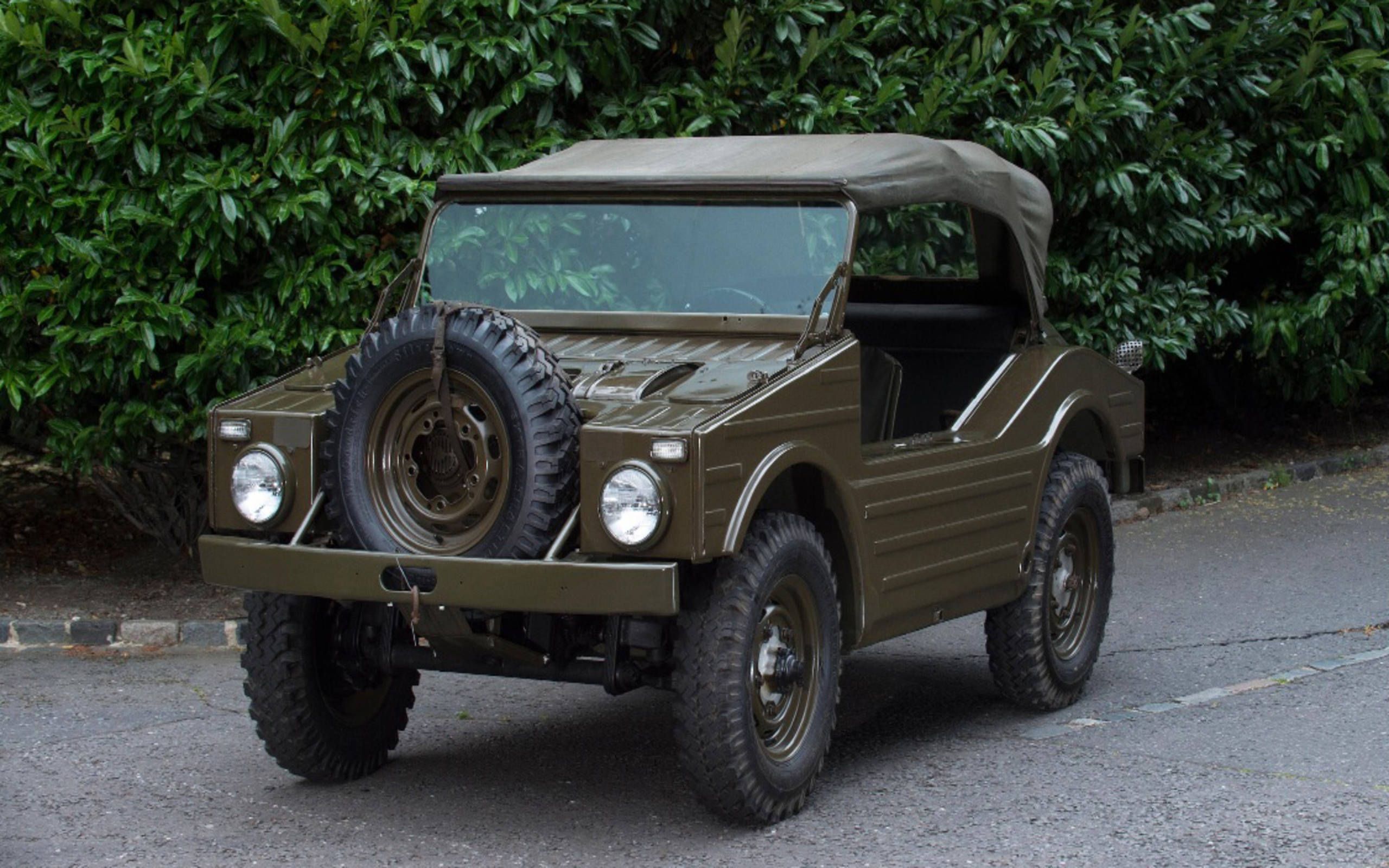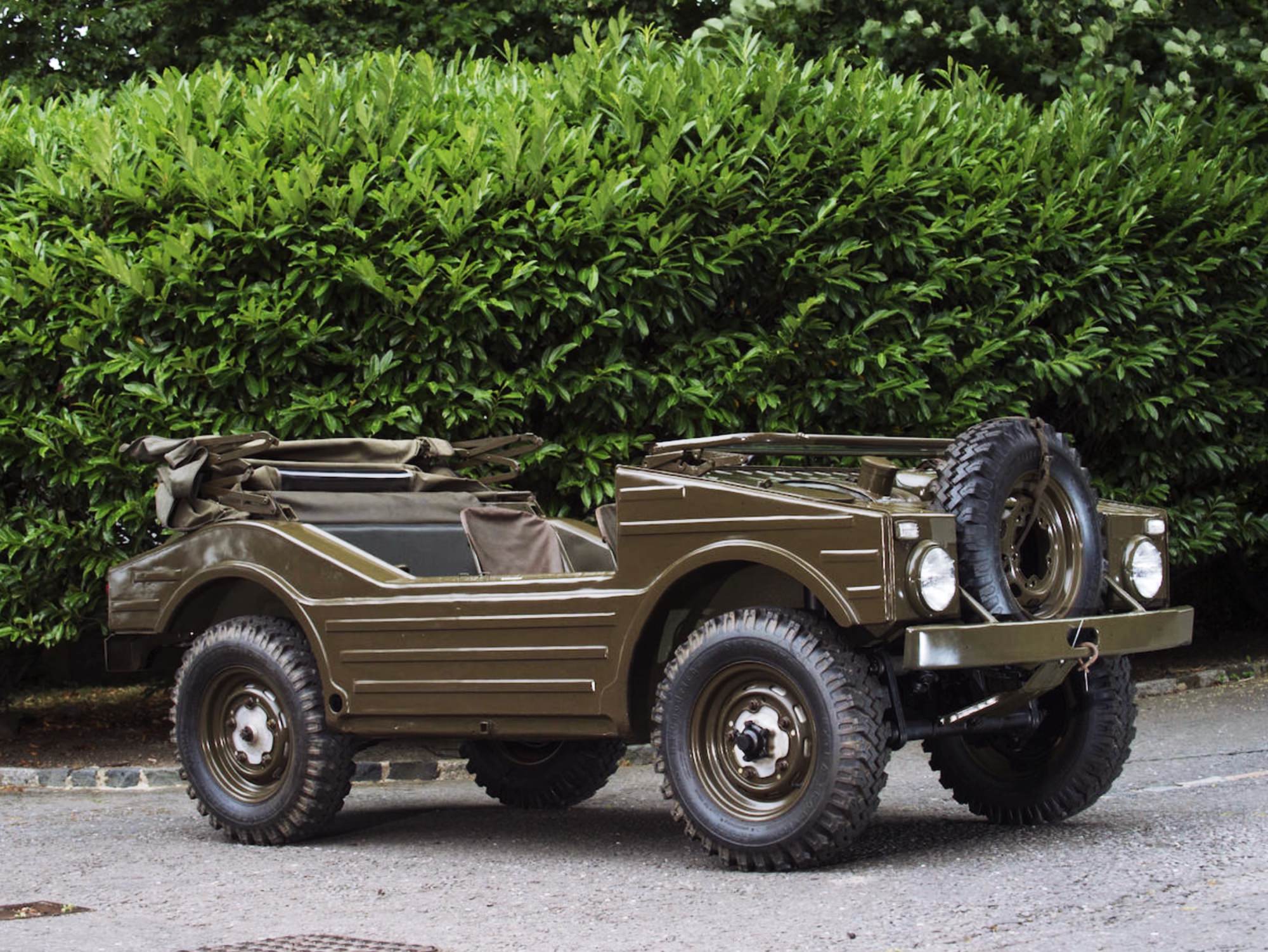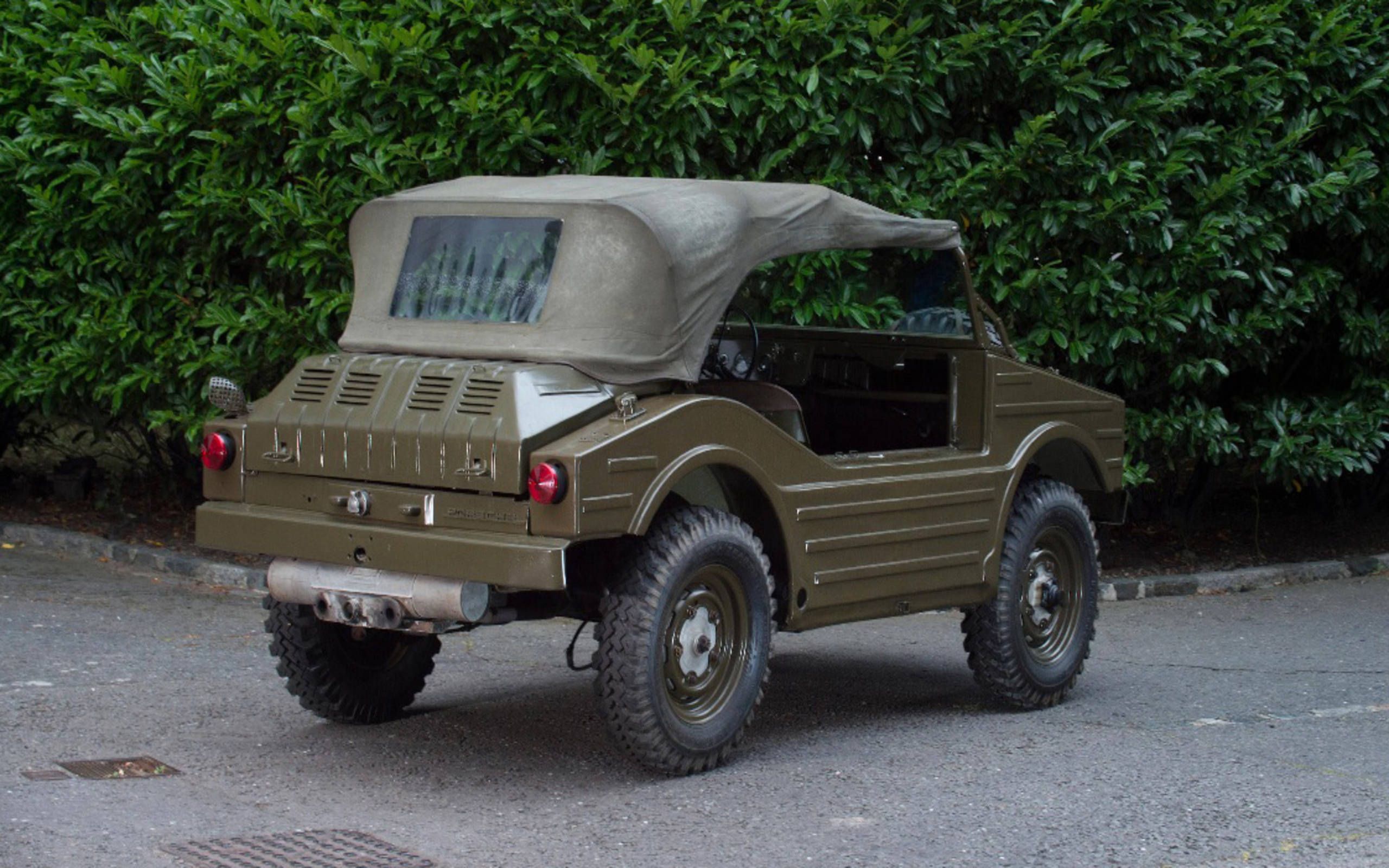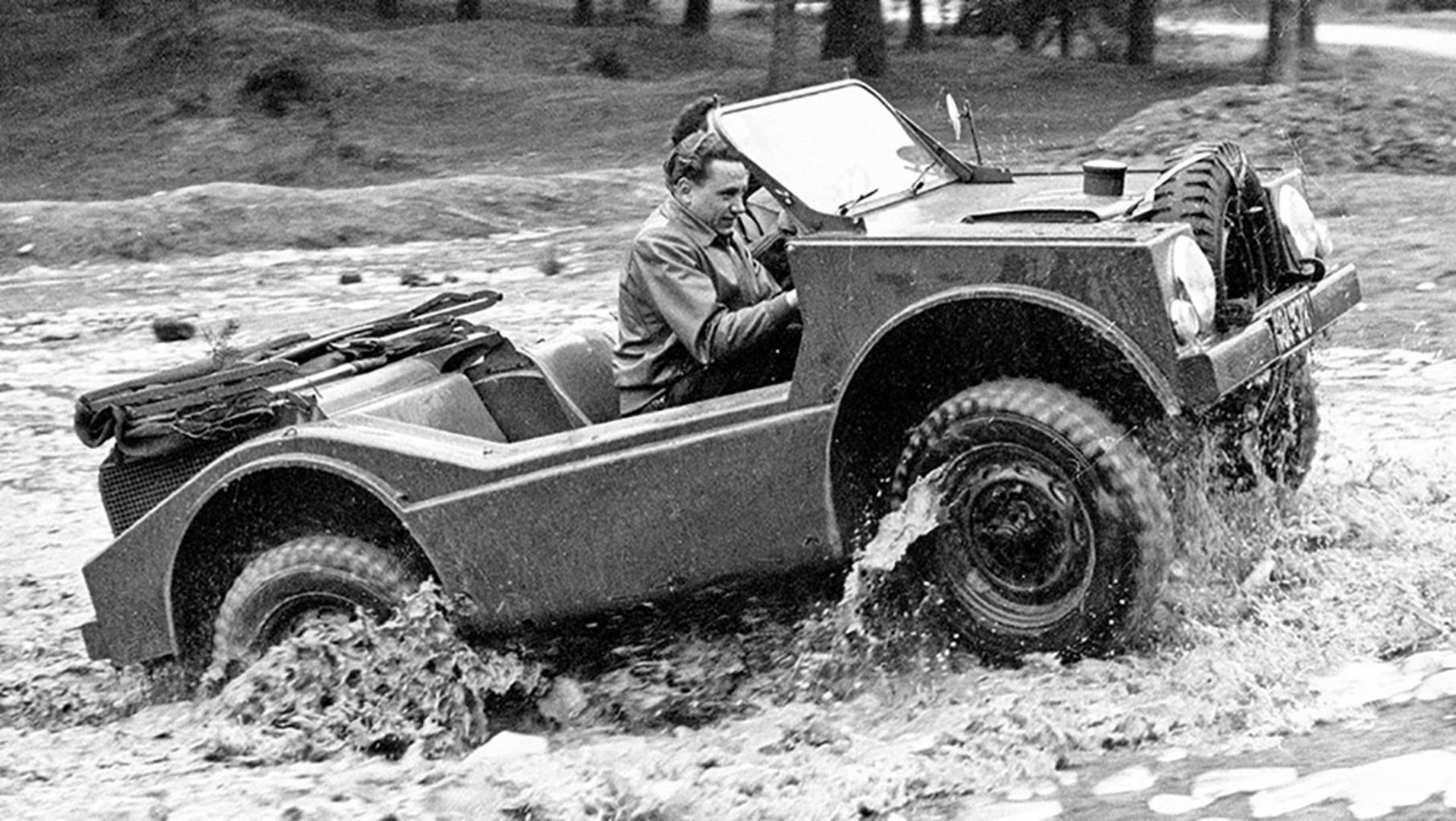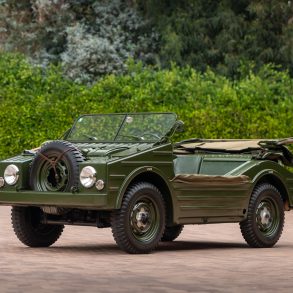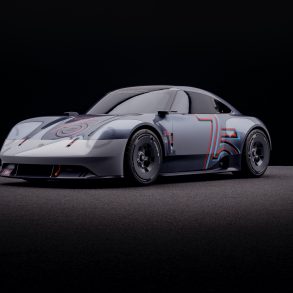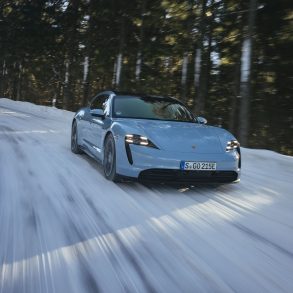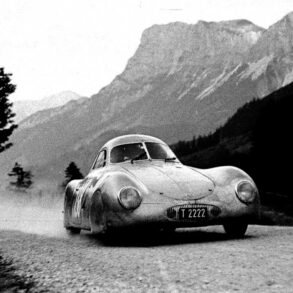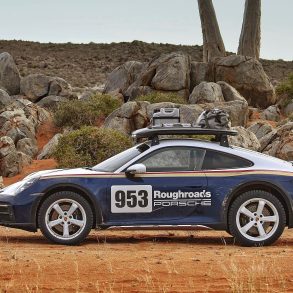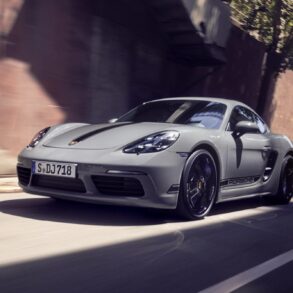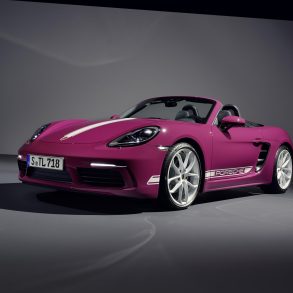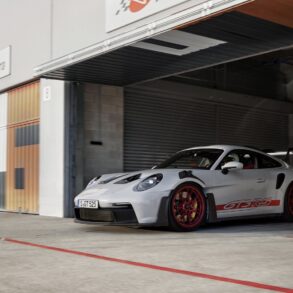Porsche 597 (1955-1958)
After Porsche decided to participate in a state tender for a light military vehicle, a complete car was engineered and built in small series, but the tender was not won by Porsche. The Porsche type 597 off-roader had a rear-mounted 356 engine, 4-wheel-drive and a special transmission with low gear. The car is able to climb steep grades up to 33 degrees. The type 597 was designed to be amphibious, that is the reason for its high barriers for entering the car.
When the German Army tender was lost to DKW, Porsche decided to market the product for civilian use, supposedly for hunting. This provided the 597 with a nickname “Jagdwagen”. In addition to the military prototypes around 50 Jagdwagens were produced, but there was no need for such a product in large numbers and the project was terminated.
The Story
Try asking any Porsche enthusiast what a 597 is and in 999 out of 1000 cases you will see his gaze get lost in something that memory cannot grasp. Some may say that it is the model that won Le Mans or won in Indianapolis. Still, very few will be able to give you the right answer because we have gotten into the habit of identifying German cars as GranTurismo and race cars that one could hardly imagine the Stuttgart Horse on the front of a military vehicle.
And yet the 597 was precisely that: A grey-green Porsche. Production of the Typ 597 started in 1954 when the German army (Bundeswehr) launched a contest for the supply of military vehicles to use in the roles that NATO assigned to Germany in defending the borders with Eastern Europe.
The Auto Union Group with DKW’s Typ F91, the Borgward Group with Goliaht’s Type 31 and the Ferdinand Porsche Technical Firm with the Typ 597 all responded to the tender for a multipurpose all-wheel drive off- road vehicle (Mehrzwek Universal Gelàndefahrzeug Allrad-antrieb, abbreviated as M.U.N.G.A., the acronym used for the famous off-road vehicle by DKW.
The name Porsche coupled with a military project, should not be surprising. To get an idea of the experience acquired by Porsche Studio in this field, we need to think of the Volkswagen Kùbelwagen and Schwimmwagen. Still, for the sake of completeness, we must also consider the Austro-Daimler M12 artillery tractor used to transport of the mammoth Skoda 305mm, which fired 380 kg bullets, the C-Zug road/rail train, for the transport of 26-ton cannons and, the incredible Maus tank, built to accept (unwillingly) the challenge of General Heinz Guderian who wanted a hundred wagons with dimensions and features never seen before to break through the eastern front during the Second World War.
The Maus was a self-propelled, and armoured shrine, 3 meters and 66 centimetres high weighing 188 tons and was moved by a 1,500 Hp Daimler-Benz engine coupled to a generator that powered two electric motors connected to the tracks. All hell broke loose when the first three prototypes started to move. As they passed through streets, these would sink, the windows of houses shattered, the bridges gave way and to top it all off, there was no way to find a means capable of detaching a Maus getting bogged down in a meadow. Fortunately, the project waned.
With such intricate designs behind them, the Porsche Studio engineers found it easy to design the Typ 597 according to the much more reasonable specifications of the Bundeswehr which imposed, among other things, a weight of around 1,000 kg, traction of all four wheels, a gradient of over 60%, a ford height of 50 cm and a 24 Volt electrical system.
While Auto Union-DKW and Goliath addressed the issue starting from the basis of pre-existing civil models with front-wheel drive and two-stroke water-cooled engine, the Porsche Technical Studio preferred to use the familiar scheme of the air-cooled boxer engine with rear-wheel drive, already used for Volkswagen and Porsche 356, abandoning the Volkswagen platform chassis in favour of a tub-shaped self-supporting body. They created four-wheel traction in a rather simple way. They kept the existing traction system for the rear axle, which received the motion from the back end of the secondary gearbox shaft; to the opposite part of the same secondary, they connected a transmission shaft to bring the motion to the front differential, in turn, fixed to the body and attached it to the wheels using oscillating axle shafts. To the gearbox, they added gear with a much shorter ratio than the first.
For the engine, the choice fell on the 1500 single carburettor for fixed installations, derived from that of the 356 A “which Porsche successfully produced and sold combined with generators, pumps, winches and more. For the electrical system, the technicians followed the army’s specifications to the letter. The army’s requirements were 24 Volts to unify the emergency starting system with that of all the other vehicles of the Bundeswehr and a 600 Ah dynamo to feed additional equipment, such as two-way radios.
The manufacture of the Typ 597 began in 1954 on a unique assembly line that was also used for the 356 Carrera and the racing Spyder 550. The prototypes were equipped with 1,500 cc engines, and it is almost sure that the first two were also amphibians, complete with propellers and paddles as standard.
Subsequent prototypes lost propellers but remained amphibious. In the fords, they could float and move tanks to the rotation of the wheels, with the help of the paddles supplied in the kit. Apart from the propeller, the final 597 changed little compared to the prototypes: the main changes were made to some body panels in corrugated instead of a smooth sheet, and the engine was 1600 instead of 1500. However, it remains challenging to find two Typ 597s that are identical in all respects, because the changes and adaptations followed one another at a rapid pace also based on the tests carried out by the Bundeswehr and as a consequence of the set-ups required for particular operating conditions, such as additional heating and torpedo bodywork, but with two or four doors or even without doors.
In many respects, the Typ 597 was superior to its opponents. For example, the 50 Hp engine exceeded both the three-cylinder two-stroke Auto Union Dkw (38 HP for the 896 cc and 44 HP for the 980 cc version), and the two-stroke two-cylinder Goliath, which developed 38 HP with 886 cc and the costly peculiarity of direct injection fuel. It was only matched with the four-cylinder four-stroke 1,100 with 50 hp of the latest Goliath, introduced in 1958. Porsche beat its opponents in the maximum slope that could be overcome, torque at low revs, fuel consumption and the traction on very poor adhesion surfaces (mud and snow).
However, the contract was awarded to the Auto Union-DKW in 1958. The company ensured the supply of 55,000 Typ F91 Munga to be carried out in three years. The American Myron Vemis, the greatest scholar of the Typ 597, believes that the failure to assign the contract to Porsche was due to the excessive mechanical complexity and, therefore the too high final price of the vehicle. After comparing the 1958 retail prices of an Auto Union Munga (9,500 DM) and a Porsche 356 A 1600 Speedster (11,900 DM), another hypothesis seems more reasonable, reinforced by the presence of the stamp of the Ferdinand Technical Studio Porsche (instead of that of the parent company) on the back of the car’s use and maintenance manual while the address printed on the last internal page of the same manual is not that of Porsche as an automobile factory, but that of the Porsche Technical Studio. It is probable that the Porsche factory did not have the possibility of manufacturing such large numbers of the Typ 597, and that the Technical Studio (what would today be called an engineering firm) thought rather than selling the project to another company (Volkswagen for example) could manufacture the more than 50,000 specimens required by the specifications. To get an idea of the actual production capacity of the Stuttgart factory at the end of the 1950s, think that in 1958 Porsche built 5,980 cars in total and in 1964 it only exceeded 10,000 units per year, which would have been insufficient to satisfy the requests of the army if the company was exclusively dedicated to producing the military model.
Volkswagen also dropped the potential of the Typ 597, because, during that period of the “economic boom” throughout the world, the company’s most important commitment was that of adapting its production capacity to a market that was undergoing powerful growth.
After the possibility of mass production had been blurred, Porsche decided to place the remaining part of the 71 units built for the general public, to whom the Typ 597 was proposed with the name Jagdwagen (hunting car). In Europe the off-road market had yet to explode, so most Jagdwagen ended up in the United States.
Videos
Porsche 597 Brochure
Picture Gallery
Porsche Press Release – The Porsche 597 “Jagdwagen”
A rare all-rounder
11/09/2018
The Porsche 597 “Jagdwagen” started life as a design submitted by Porsche in response to a call to tender by the German army during the 1950s. With its switchable all-wheel drive and trough-like monocoque bodyshell, it could withstand almost any type of terrain – both on land and water. However, only 71 units of the off-road vehicle were built.
A call to tender by what would later become the Bundeswehr in 1953 prompted Porsche developers to begin work on an off-road vehicle for the military. The vehicle needed to be fast, agile and lightweight yet offer the greatest possible load capacity – as well as being suitable for off-road use, reliable and easy to service. Along with Auto Union (formerly DKW) and Goliath, a Borgward subsidiary, Porsche was one of three German manufacturers involved in the tendering process.
The designers equipped the type 597 “Jagdwagen” with a modified four-cylinder flat engine from the Porsche 356, located in the rear of the vehicle. This provided some 50 hp, allowing the vehicle to demonstrate impressive driving dynamics despite its inclination towards off-road capabilities: Weighing in at around 870 kilograms and offering a top speed of up to 100 km/h, the Porsche 597 was extremely agile for a military vehicle.
The first all-wheel-drive vehicle to bear the Porsche name
The flat engine delivered power to the rear axle via a synchronised four-speed transmission with an additional off-road gear. Its switchable front-wheel drive made the 597 the first all-wheel-drive vehicle to bear the Porsche name. In all-wheel drive mode, the car could scale inclines of up to 65 percent at 1,000 rpm.
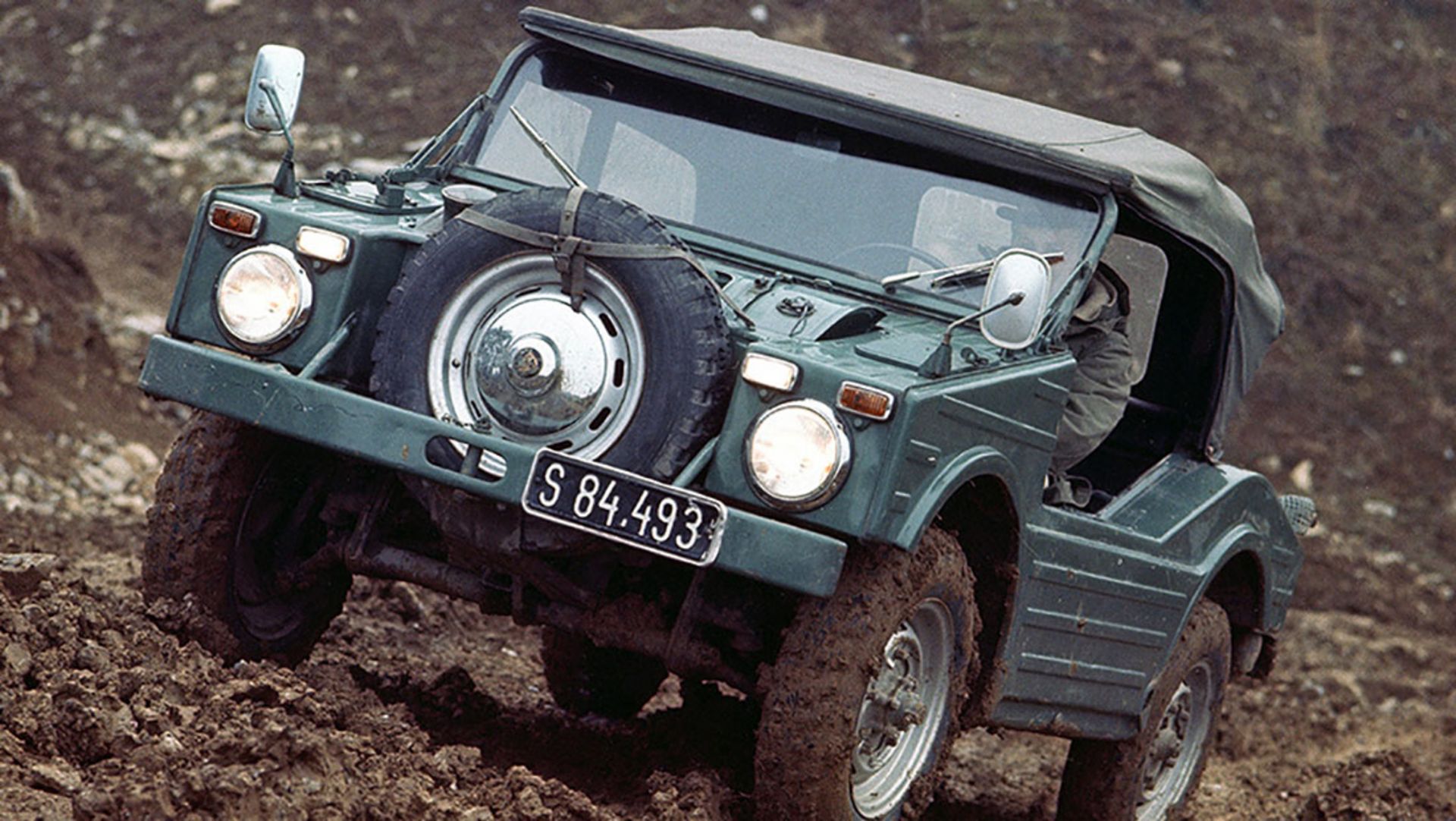
The Jagdwagen could also be used on rivers – its compact monocoque bodyshell meant that it could float across the surface of the water. As a result, an early version of the vehicle was produced without any access doors.
As early as January 1955, the manufacturers presented the first prototypes to the government at the Bonn/Hangelar airfield to demonstrate the suitability of their vehicles. The Porsche Jagdwagen generated a great deal of interest and during the following months was also presented at British and French military bases in Germany. An expert audience was given the opportunity to see Porsche’s most recent development at the Geneva Motor Show in March 1955.
A rare all-terrain talent – the Porsche 597: Around 50 units still in existence
Over the next few years, Porsche worked to develop the Type 597 “Jagdwagen” in preparation for series production: The version produced from the end of 1957 featured a more sharply sloping front and the addition of four steel doors. Despite successful testing, Goliath and Porsche were only permitted to produce a further 50 units for test runs for the Bundeswehr, which was officially founded on November 12, 1955. Owing to financial reasons and labour market policy, the contract was awarded to Auto Union in Ingolstadt, prompting Porsche to halt work on the project.
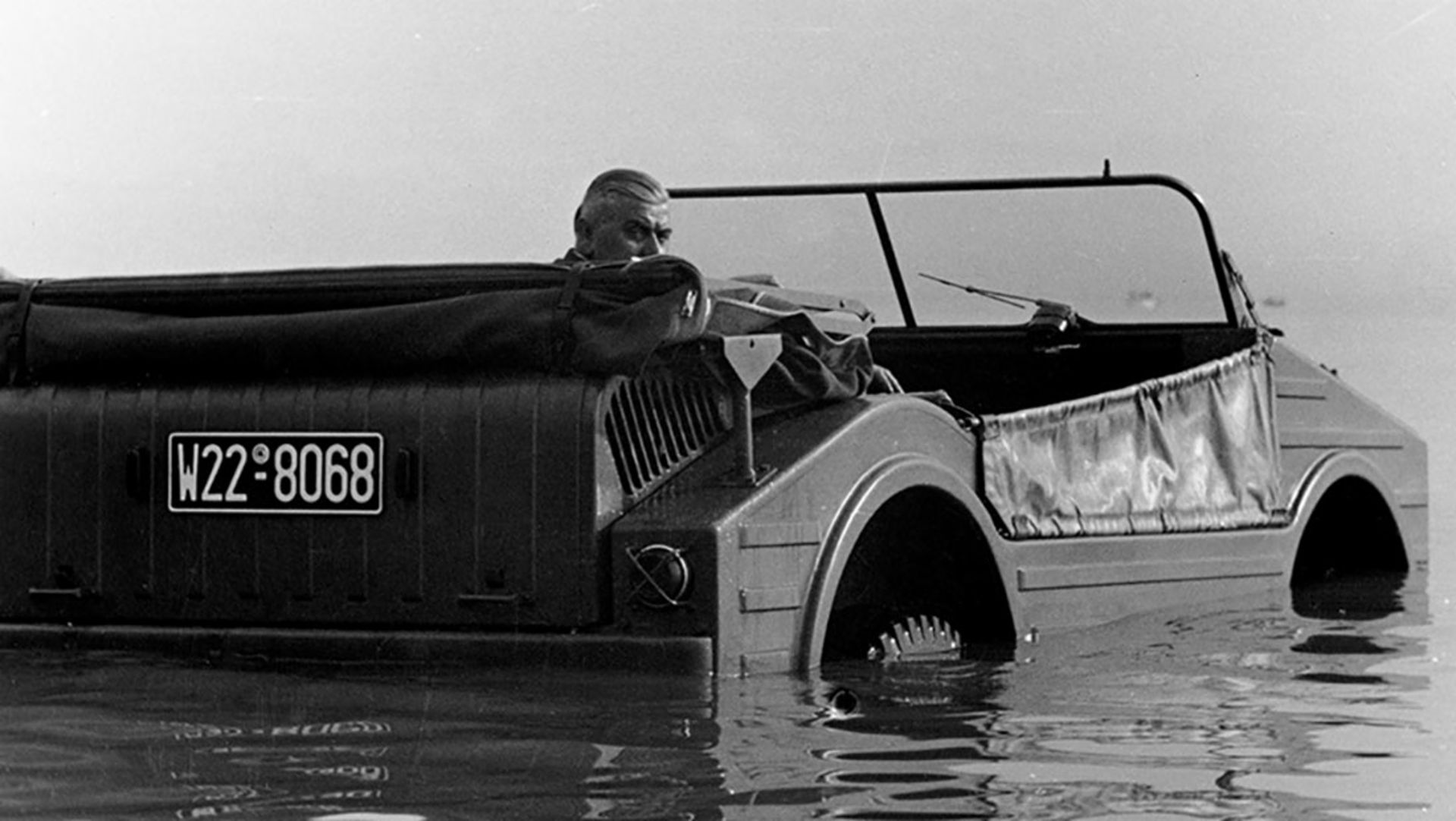
In total, Porsche manufactured 71 units of this early off-road vehicle. Only around 50 of these vehicles still exist, making the “Jagdwagen” an especially rare model. Today, the majority of “Jagdwagen” owners are involved with the Porsche Jagdwagen Registry e.V. – presumably the smallest Porsche club in the world.
